Military-technical cooperation between the West and China in the field of combat aviation
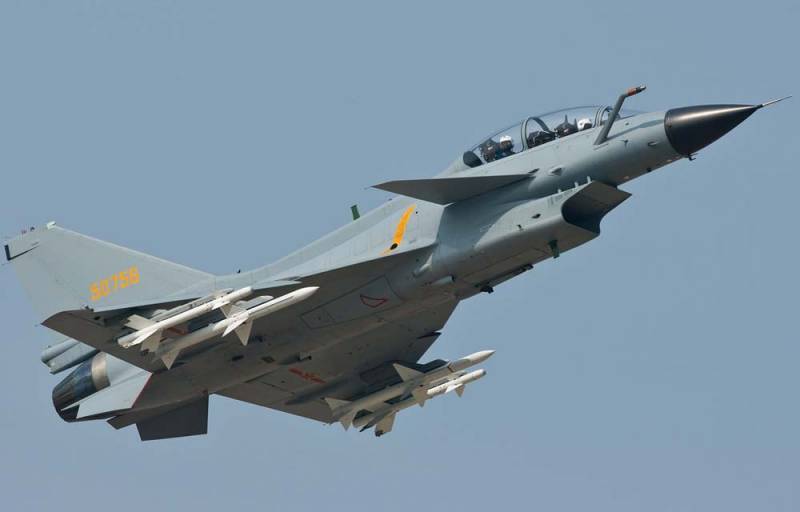
In the late 1970s, Chinese aviation the industry was in deep stagnation, and this primarily applied to combat aircraft. The basis of the fighter aviation of the PLA Air Force was the J-5, J-6 and J-7 fighters - Chinese copies of the MiG-17, MiG-19 and MiG-21F-13. Fine-tuning of the Chinese supersonic all-weather fighter-interceptor J-8, the first modifications of which largely followed the line of development of the Su-9 and Su-11, was very difficult.
Before the termination of military-technical cooperation with the USSR, Chinese specialists were mainly engaged in adapting Soviet aircraft to local conditions, making minor changes to the design of aircraft, adapting them to the production capabilities of Chinese enterprises and local operating conditions. The aggravation of Sino-Soviet relations led to a virtual halt in the development of military aviation in China. The absence in the PRC of a developed scientific and design base and its own developments did not allow it to independently create advanced world-class combat aircraft.
After the establishment of diplomatic relations with the United States and the rapprochement between Washington and Beijing on the basis of anti-Sovietism, China gained access to many defense aviation products available in Western-oriented countries. It was about the acquisition of individual units: avionics, radars, aircraft engines and weapons, and the purchase of full-fledged flight samples, a package of technical documentation. In a number of cases, Western developers and manufacturers of aviation equipment participated in the modernization of Chinese combat aircraft, and Chinese specialists trained in the West. A large-scale purchase of machine tools and lines for the production of electronic components was also made.
As a result, all this made it possible to prepare the ground for a qualitative breakthrough that raised the PLA Air Force to a new level of development.
Purchases of Soviet-made aircraft in Egypt
Until the mid-1970s, Egypt was one of the largest recipients of contemporary Soviet weapons. In 1978, Egyptian President Anwar Sadat announced the termination of defense cooperation with the USSR and the transition to Western standards. After the conclusion of a peace agreement with Israel and the establishment of partnerships with the United States, American and then Chinese experts got the opportunity to thoroughly familiarize themselves with Soviet-made fighters.
In 1960, China received from the USSR a package of documentation for the MiG-21F-13 fighter, as well as several finished aircraft and assembly kits. In the PLA Air Force, this aircraft received the designation J-7. However, due to the “Cultural Revolution” that began in the PRC, the serial production of the J-7 was stopped, and it was only by the beginning of the 21s that the Chineseized MiG-1980 was brought to mind.
Further improvement of the J-7 in the PRC was largely due to the outright theft of Soviet MiG-21 fighters supplied to the DRV through Chinese territory. In addition, according to Western sources, China bought several MiG-21MFs from Egypt. After getting acquainted with the new modifications of the MiG-21, the Chinese copied the GSh-23 aircraft gun, the R-13-300 turbofan engine and the Sapphire-21 radar.
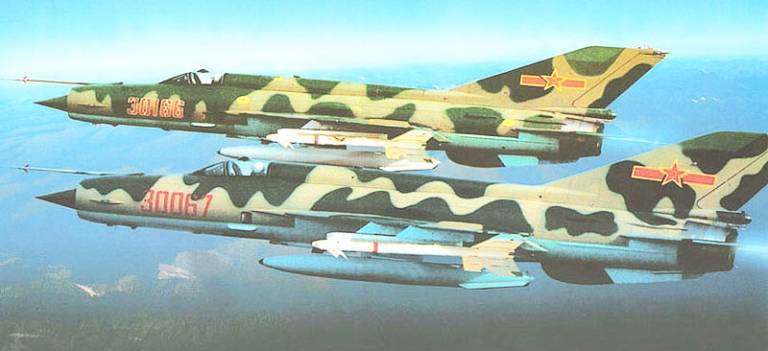
Fighter J-7C
The J-7C fighter, which appeared in 1984, had a radar sight, a new more powerful engine and was armed with a 23-mm cannon and four missiles with a thermal homing head PL-2 (a copy of the Soviet K-13) or improved PL-5. On the J-7D fighter, the production of which was launched in 1988, they installed the JL-7A radar with a detection range of the Tu-16 bomber of about 30 km. J-7D production continued until 1996.
Chinese designers, who unsuccessfully tried to create a new generation fighter on their own, were much more interested in the MiG-21MS front-line interceptors and MiG-23BN fighter-bombers available in Egypt than the MiG-23MF.
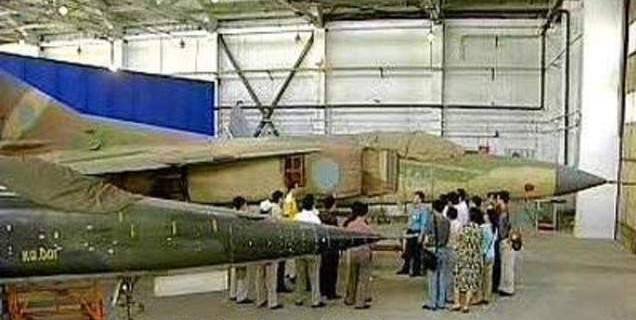
For a long time, everything related to the presence of variable-swept MiGs in China was hidden by a veil of secrecy. Only relatively recently have photographs been published that capture this technique. In the existing image, in addition to the MiG-23MS, you can also see the American F-5A fighter, transferred by Vietnam, even before that country's relations with China deteriorated.
It is now known that Egypt in the late 1970s handed over to the PRC two MiG-23MS, MiG-23BN and MiG-23UB aircraft. Due to the fact that in the 1970s the concept of a variable-sweep wing combat aircraft was very popular, China decided to develop a strike machine according to this scheme. Of particular interest was also the avionics, engine and armament of the MiG-23. After getting acquainted with the design and flying around the "twenty-thirds", it was decided to create a Chinese fighter-bomber with a variable geometry wing Q-6, equipping it with a copy of the R-29-300 engine, a laser rangefinder-target designator, a terrain following system and modern navigation equipment.
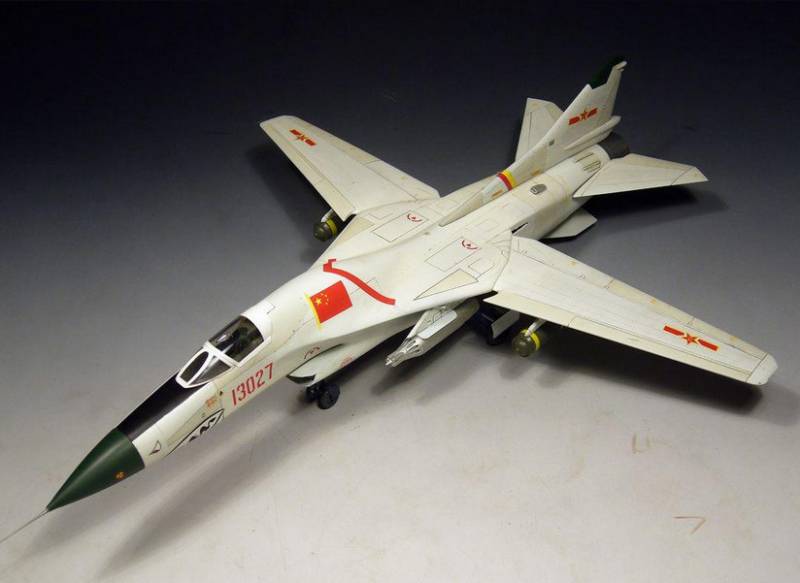
Layout fighter-bomber Q-6
The PLA Air Force command hoped that the use of Soviet technical solutions familiar and understandable to Chinese specialists would make it possible to create a new fighter-bomber in a relatively short period of time and at moderate costs. However, Chinese designers, with the technologies at their disposal, could not provide the necessary strength of the wing and acceptable reliability of the turning mechanism. An attempt to unlicensedly copy the Soviet R-29-300 turbojet engine and aiming and navigation aviation systems also failed.
Western avionics on PLA Air Force aircraft
In the 1980s, the main efforts were concentrated on improving the J-7 fighter. Although the 4th generation fighters had appeared in the USA and the USSR by that time, the PLA Air Force had nothing better than its own versions of the MiG-21.
The J-7E fighter, which made its first flight in 1987, used British-designed avionics, an Israeli fire control system and PL-8 missiles copied from the Python 3 missile defense system.
In 2001, the last and most advanced modification in the family of Chinese “twenty-firsts” was tested - the J-7G fighter with a Chinese-made KLJ-6E airborne radar (a licensed copy of the Italian Pointer-2500 radar) with a range of detecting air targets against the background of the ground up to 55 km.
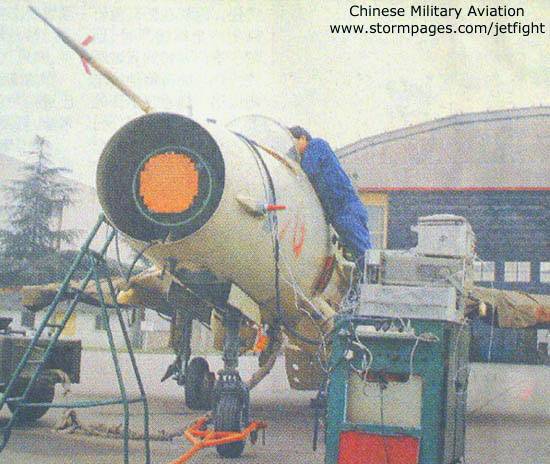
Radar maintenance on J-7G
A Type 7 HUD is installed in the cockpit of the J-956G fighter, which displays flight and sighting information, and the pilot has a helmet-mounted target designator at his disposal. The official adoption of the J-7G into service took place in 2004, and the J-7E / G fighter modifications in the PLA Air Force are still in operation.
In the 1970s, the PRC did not have fighters and front-line bombers equipped with powerful anti-interference airborne radars capable of detecting an air target beyond the line of sight, which in turn severely limited the capabilities of fighter-interceptors and strike aircraft in the dark and in the absence of guidance from the ground.
In this regard, a number of Chinese research institutes were tasked with copying the AN / APQ-113 surveillance and sighting station, taken from the American F-111A fighter-bomber shot down in Vietnam, and the AN / APQ-120 multifunctional radar, which was installed on F- 4D/E/F/G Phantom II.
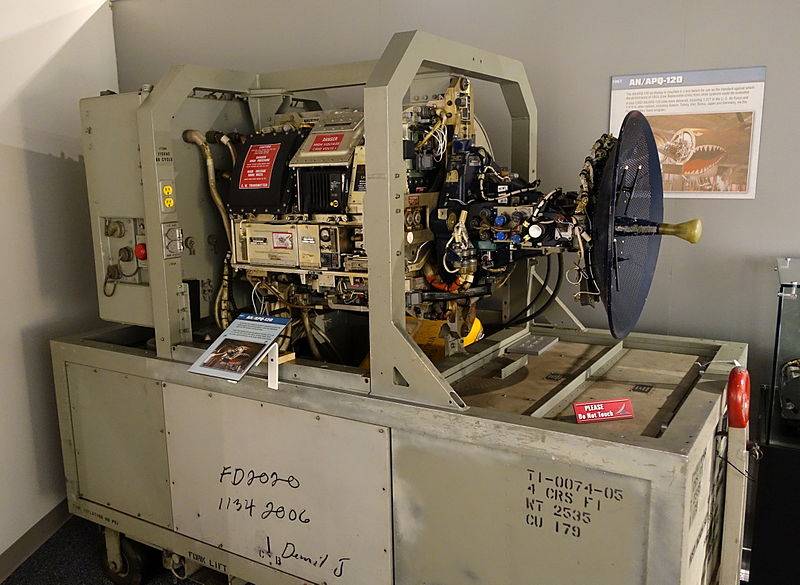
Radar AN / APQ-120
Chinese specialists managed to assemble a working sample of the AN / APQ-120 radar from blocks dismantled from several aircraft that crashed in the jungles of Southeast Asia, but they were unable to independently reproduce the American station, which used a semiconductor element base.
In the mid-1980s, taking advantage of its status as the main fighter against "Soviet hegemonism" in the Far East, China managed to gain access to documentation and legally acquired samples of the AN / APQ-120 radar, which by that time was considered largely obsolete in the United States. Based on this American radar, produced in the USA since the mid-1960s, the Type 232H radar was created in China. According to information published in the public domain, this station, installed on the first versions of the JH-7 fighter-bomber, is capable of detecting the MiG-21 at a distance of up to 75 km, and a large surface target is detected at a distance of up to 160 km.
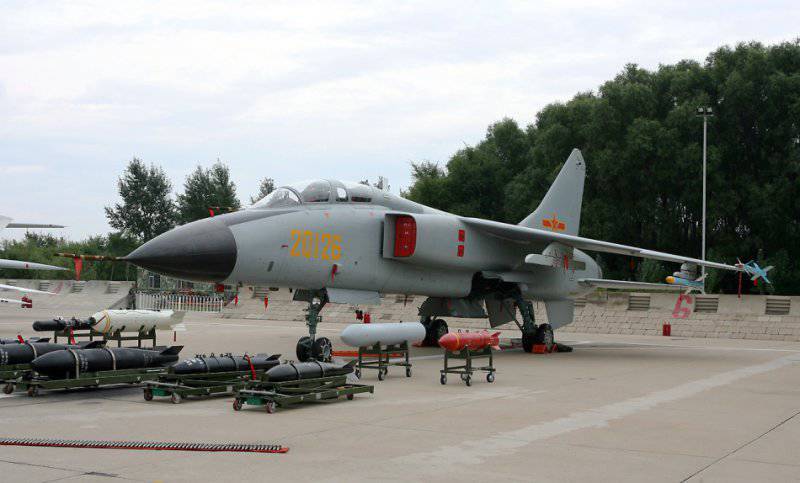
JH-7 Fighter Bomber
Although the JH-7 is designated as Jianjiji-Hongzhaji - a fighter-bomber, this aircraft is actually a front-line bomber and was primarily created to replace the obsolete H-5 bomber (Chinese version of the Il-28). The first production JH-7 aircraft were produced in 1994. The upgraded version, which received updated avionics and armament, first flew in 1998, became known as the JH-7A.
In 1985, serial construction of the J-8II interceptor began. But due to the fact that the Chinese industry could not equip the J-8II with modern avionics and weapons, the PRC leadership took an unusual step. In the framework of Sino-American cooperation in 1986, a contract worth more than $ 500 million was signed for the modernization of Chinese J-8II interceptors in the United States.
Details of the secret program, known as Peace Pearl, have not yet been disclosed. But a number of sources say that the American AN / APG-66 (V) radars, 1553B MIL-STD data buses, fire control processors, multifunction displays, an indicator on the windshield, were supposed to be installed on Chinese fighter-interceptors, modern navigation and communications equipment, an ejection seat from Martin-Baker.
In early 1989, two J-8II fighters specially trained at the Shenyang aircraft factory were delivered to the US Air Force Flight Test Center - at Edwards Air Force Base. According to Western data, China managed to prepare 24 interceptors for the installation of American avionics. However, after the events on Tiananmen Square, the Americans curtailed military-technical cooperation with China, and further improvement of the J-8II had to be carried out on its own.
However, Chinese experts managed to peep a lot of useful things from the Americans. After breaking the contract with the United States, the interceptor, known as the J-8II Batch 02 (J-8IIB), received an improved SL-8А radar with a detection range of 70 km, multifunctional displays and modern navigation equipment at that time. But before the version that was supposed to be received as part of the Peace Pearl program, this interceptor fell short. The capabilities of the fire control system were very modest, and melee missiles remained the main weapon. Nevertheless, this option was put into mass production.
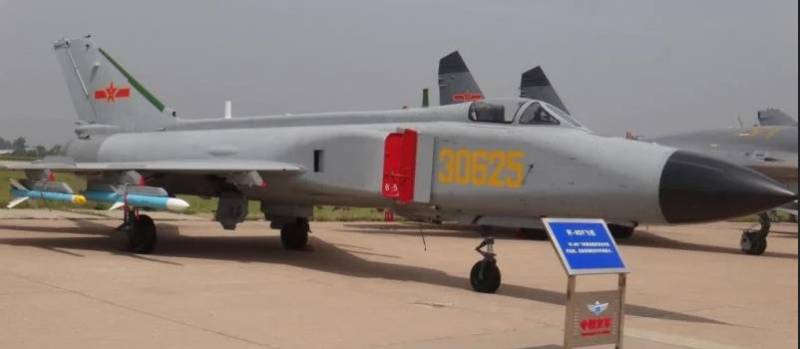
J-8IID interceptor with PL-11 and PL-8 missiles
After modernization, installation of air refueling equipment and medium-range missiles PL-11 (a copy of the Italian Aspide Mk. 1), the aircraft received the designation J-8IID (J-8D). The standard armament of the interceptor was two PL-11 medium-range missiles with semi-active radar guidance and two PL-8 melee missiles (a copy of the Israeli Python-3).
Western-style radars were also received by Chinese anti-submarine patrol aircraft and AWACS. In the early 1980s, a batch of American AN / APS-504 radars was sent to China, which were subsequently used to be installed on Y-8 aircraft (a Chinese copy of the An-12). The AN / APS-504 surface illumination radar, which scans the space in the lower hemisphere, is capable of detecting large surface targets at a distance of up to 370 km.
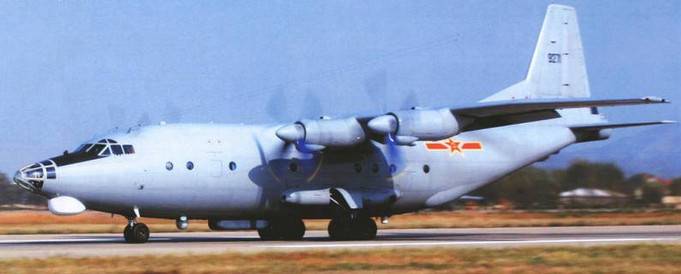
Patrol aircraft Y-8X
The use of Y-8X patrol aircraft equipped with AN / APS-504 radar began in 1986. In addition to the radar, on board the Y-8X there were electronic intelligence and electronic warfare stations, cameras, infrared sensors, a magnetometer, a sonar buoy signal receiver, advanced Western-made communications and an Omega navigation system. The rear ramp is tightly sewn up, and the interior space is divided into several compartments for operators and electronic equipment.
According to Western data, a total of four Y-8X aircraft were built. Upgraded Y-8X still regularly make long-range reconnaissance flights in the waters of the East China and South China seas, along the coast of South Korea and Japan.
In August 1996, bypassing the sanctions against China, the British company Racal Electronics supplied 8 Skymaster aircraft radars, worth $66 million. At a range of 7–000 km, the radar is capable of detecting submarine periscopes. Low-altitude air targets with an EPR of 250 m² are detected at a distance of 80 km. The radar can simultaneously observe 90 air targets and 5 surface targets.
Eight Y-8 military transport aircraft were allocated to install British-made radars. Converted aircraft with a characteristic "beard" of the radar received the designation Y-8J. According to the official Chinese version, these machines were intended to fight smugglers and to "explore the oceans."
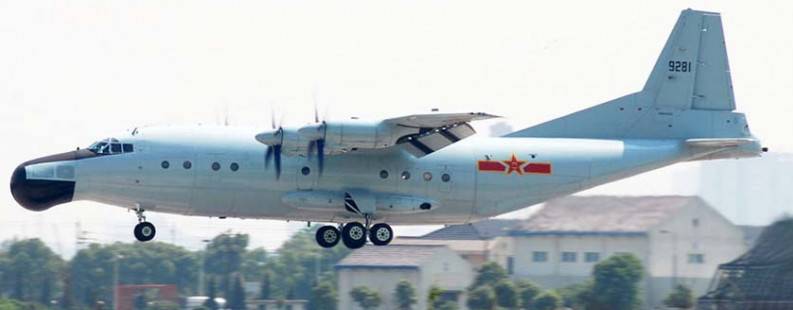
Y-8J
In addition to radar, aerial cameras, additional suspension units for bombs and buoys, the aircraft received larger fuel tanks, which increased the patrol duration to 11 hours at a speed of 470 km/h. The onboard equipment included radio intelligence stations and new means of communication. After modernization, the aircraft received a dark ball color. Foreign experts believe that, albeit with some restrictions, the Y-8J became the first Chinese AWACS aircraft capable of directing combat aviation.
In the late 1980s, the USSR offered China an export modification of the AWACS aircraft - A-50E, with a simplified radio-technical complex and without closed communication equipment. However, Chinese experts, having familiarized themselves with the radio-technical complex of this machine, built on a less than perfect element base, considered that it would be more rational to use the Il-76TD base platform, combining it with modern Israeli-made equipment.
After quite lengthy consultations in 1997, a tripartite contract was signed for the creation of an early warning aviation complex, which received the preliminary designation A-50I. The contractors were the Israeli company Elta and the Russian TANTK them. G. M. Berieva. The Russian side undertook to prepare a serial A-50 for conversion, and the Israelis were to install an EL / M-205 PHALCON radar, a data processing complex and communications equipment on it.
Unlike the Soviet AWACS A-50 aircraft, the Israeli EL / M-205 radar antenna was to be placed in a fixed disk-shaped fairing with a diameter of 11,5 m (larger than that of the A-50), with three AFARs forming an isosceles triangle. According to the characteristics announced by the manufacturer, the Israeli decimeter range radar (1,2-1,4 GHz), in combination with high-performance computing tools and special noise suppression devices, was supposed to provide the ability to detect “difficult” low-altitude air targets: cruise missiles and aircraft developed using technology of low radar visibility. The cost of one AWACS aircraft with Israeli equipment was $ 250 million. In total, the PLA Air Force intended to order four such aircraft.
The practical implementation of the contract began in 1999, when an A-50 from the Russian Air Force with tail number "44" flew to Israel after the dismantling of the Soviet radio-technical complex and overhaul. According to the schedule, the first AWACS aircraft with an Israeli radar, an electronic intelligence station and communications equipment was to be handed over to the Chinese side at the end of 2000. But already during the implementation of the program, the Americans intervened in the matter, and already with the high technical readiness of the complex in the summer of 2000, the Israeli side announced a unilateral withdrawal from the project.
After Israel refused to jointly create AWACS aircraft based on the Il-76TD, Chinese specialists continued the project on their own. Apparently, Israel, bypassing the United States, nevertheless handed over technical documentation and equipment samples.
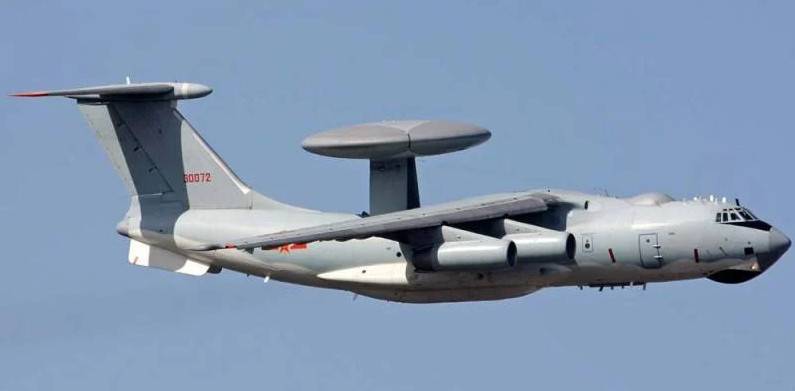
DRLO KJ-2000 aircraft
The Chinese radar complex of the aircraft, which received the name KJ-2000, largely repeated the version proposed by the Israeli designers. As planned, the aircraft received a radar with AFAR in a non-rotating disc-shaped fairing.
According to information voiced by the Chinese media, the radar installed on the KJ-2000 is capable of detecting targets at a distance of more than 400 km and simultaneously tracking up to 100 air and surface objects. It is reported that the AWACS aircraft can also be used to fix ballistic missile launches and calculate their flight trajectories. Thus, during the tests, it was possible to timely detect a ballistic missile launched at a distance of 1 km.
Unlike the Soviet A-50, the KJ-2000 did not initially have an in-flight refueling system, which, with a sufficiently high specific fuel consumption, significantly limits patrol time. At a distance of 2 km from its airfield, an aircraft can remain on patrol for 000 hour and 1 minutes. The maximum flight duration is not more than 25 hours.
In total, 4 heavy AWACS aircraft on the Il-76TD platform were built for the PLA Air Force. In the past, they often took part in major exercises and were permanently based in the eastern province of Zhejiang near the Taiwan Strait. At the moment, all available KJ-2000s have been withdrawn from the combat strength of the PLA Air Force.
Western aircraft engines
In the 1980s, China made significant efforts to catch up in the field of aircraft engines. At some stage, there were attempts to copy the Soviet R13-300 turbofans dismantled from the MiG-21MF and R-29-300, MiG-23MS / BN, as well as the American General Electric J79-GE-17A from the F-4E Phantom II. The reverse engineering of the P13-300 engine, the Chinese versions of which were installed in later modifications of the J-7 fighter, turned out to be successful. But the Chinese could not copy much more complex engines from the MiG-23 and Phantom due to a weak technological and scientific base.
Chinese developers failed to independently create an aircraft engine for the JH-7 front-line bomber, and the first batch of aircraft was equipped with the British Rolls-Royce Mk 202 Spey turbofans. Spey engines for testing were received in the late 1970s.
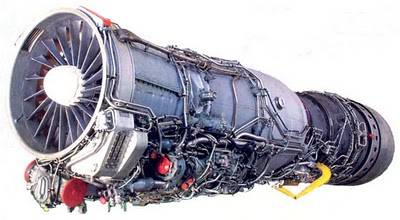
TRDDF Rolls-Royce Mk 202 Spey
The British installed such engines on their version of the deck "Phantom" FG. Mk. 1 (F-4K). TRDDF Mk. 202 had a thrust of 5/450 kg, a weight of 9 kg, a diameter of 200 mm and a length of 1 mm. In terms of static thrust, it was somewhat superior to the General Electric J856 turbofan used on American-made Phantom aircraft. However, due to the greater air consumption of the English engine, an increase in the cross section of the air intakes was required, which affected the aerodynamics of the aircraft.
During operation, it turned out that the Spey engine, which received the designation WS-9 Qinling in China, is very critical to the level of service and not very reliable. Shortly after the JH-7 entered combat squadrons, several aircraft were lost due to engine failure. As further practice of using the Rolls-Royce Mk 202 Spey turbofans showed, they turned out to be rather capricious and not entirely suitable for use on supersonic multi-purpose combat aircraft. But the Chinese did not have much choice, no one was in a hurry to sell them modern propulsion systems. It should be said that this was the first case in the post-war period when a Chinese combat aircraft was equipped with an engine not of Soviet, but of Western design.
Although the UK provided the PRC with a full package of documents necessary for licensed production, until 2003 China could not master the production of the Mk 202 Spey engine. To continue mass production of the JH-7 and replace engines that have run out of service, in 2001 an additional 90 Speys were purchased, taken from the British carrier-based F-4K fighters.
In 1982, the United States sold to China "for testing" two CFM56-2 turbofan engines manufactured by CFM International. Engines of this type were installed on Douglas DC-8 and Boeing 707 airliners.
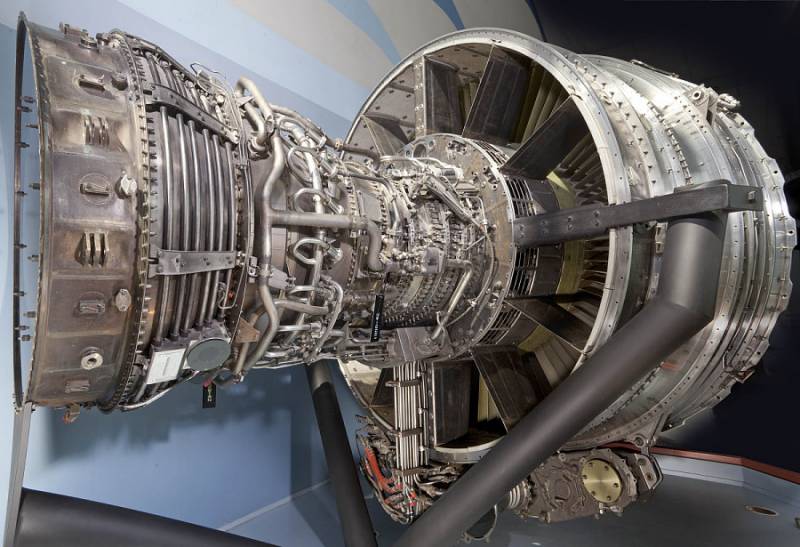
TRDDF CFM56-2
Although the CFM56-2 turbofan was installed on civilian airliners, its main components - the high pressure compressor, combustion chamber and high pressure turbine - were also used on the General Electric F110 turbofan, which in turn is the power plant on the 4th generation F-15 fighter and F-16.
The American military leadership was categorically against sending these engines to China. However, the then administration of President Ronald Reagan, hoping for an alliance with the PRC against the USSR, insisted on a deal on the condition that the engines should be stored in special sealed containers and opened only in the presence of American representatives, disassembly of the engines was strictly prohibited. But the Chinese, in their usual manner, did not comply with the agreement, they opened the engines, disassembled and studied their components. Subsequently, Beijing refused to return the engines to the US under the pretext that they had "burned out in a fire."
Sources in the US intelligence community claim that familiarity with the CFM56-2 turbofan contributed to the creation of the WS-10 turbofan, which was developed at the 606th Shenyang Research Institute of the Ministry of Aviation Industry.
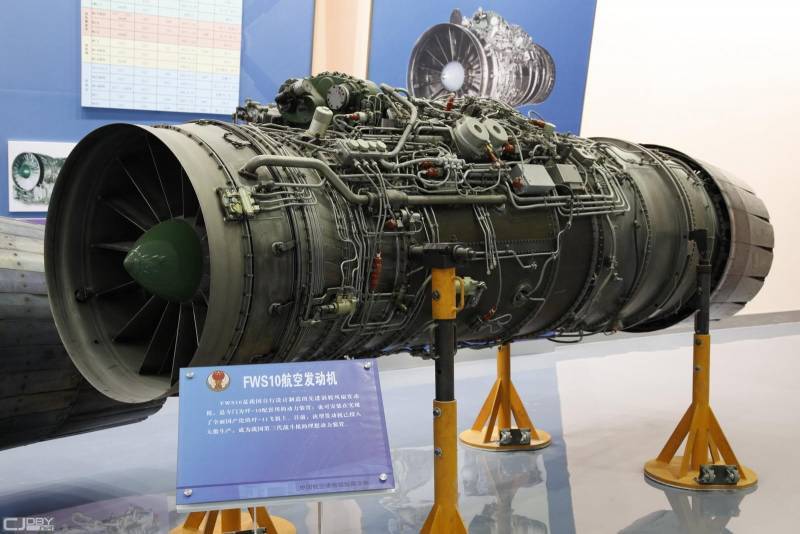
TRDDF WS-10
In the past, a number of Russian media have claimed that the WS-10 is a Chinese copy of the AL-31F engine. However, every visitor to the Beijing Aviation Museum can be convinced that this is not true. Since June 2010, the WS-10 turbofan engine has been available for free viewing in the museum exhibition.
The first serial WS-10 turbofan engines were inferior to the Soviet aircraft engine AL-31F in terms of basic characteristics, and the overhaul life of the Chinese aircraft engine did not exceed 40 hours. But since the creation of the first version of the WS-10, Chinese specialists have managed to seriously move forward in terms of increasing the resource, increasing reliability and reducing weight.
In 2014, an interview was published at the Zhuhai Air Show with Lao Dong, a representative of the Shenyang Research Institute 606. Lao Dong stated that WS-10B engines are installed on J-11B fighters. The assigned WS-10 life is 1 hours and the overhaul life is 500 hours. He also said that the engine is being improved, and the version currently being produced uses more new composite materials, which made the engine lighter, and thanks to the creation of new refractory alloys for turbine blades, it can work longer afterburner. It is reported that one of the variants of the WS-300 is capable of developing thrust up to 10 kN. According to Western sources, as of 155, more than 2021 WS-600 aircraft engines of various modifications could be assembled in China.
Fighter J-10
In the 1980s, it became clear that the J-7 delta-wing light fighter, despite attempts at modernization, could not compete with American and Soviet 4th generation fighters. In terms of maneuverability, thrust-to-weight ratio, radar and armament characteristics, the Chinese versions of the MiG-21 were hopelessly behind the F-16 and MiG-29.
In the 1970s, the PRC was building a single-engine fighter jet J-9. The prototype J-9, assembled at the aircraft factory in Chengdu, made its first flight in 1975, but due to the unavailability of the power plant, sighting and navigation system and weapons, its refinement was deemed inappropriate.
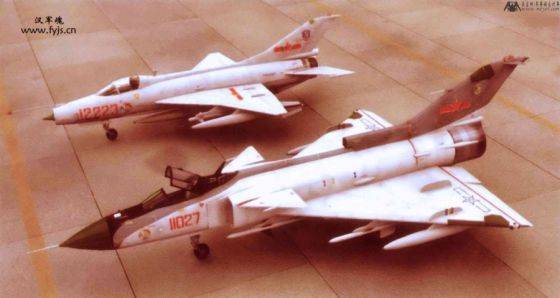
The prototype of the Chinese J-9 fighter with tail number "11027". On the right is an experimental modification of the J-7 fighter
After the failure of the J-9 project, it became clear that Chinese specialists could solve such a difficult task within an acceptable timeframe only in cooperation with foreign colleagues who had at their disposal the relevant developments and technologies. Shortly before this decision was made, in 1987, in Israel, under pressure from the United States, the development of the 4th generation light fighter IAI Lavi was stopped.
The design of this aircraft began in the second half of 1982, and the first flight of the prototype took place in December 1986. The work went at a high pace, the start of deliveries of the first serial copies was scheduled for 1990. However, the Americans, fearing that the Lavi would compete with the F-16, blocked financial support for this program.
As a result, many developments on the Israeli light fighter were used to create the Chinese J-10. Apparently, the American leadership was aware of the Sino-Israeli contract and did not interfere with it, which became a kind of compensation for Israel's refusal to launch mass production of a fighter of its own design.
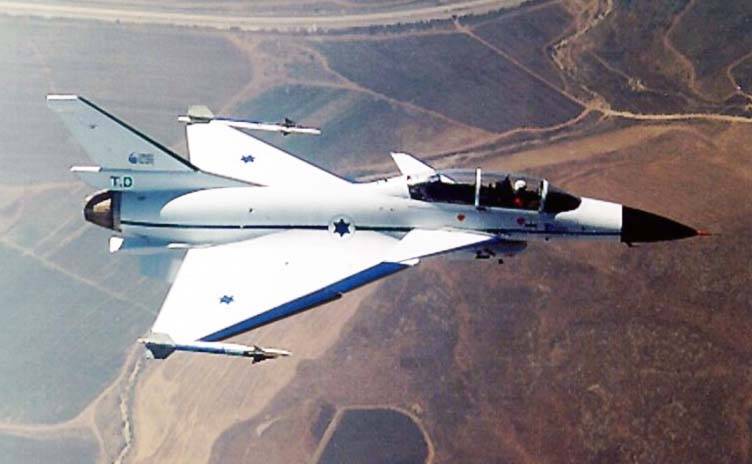
Double fighter IAI Lavi
The project of the new Chinese aircraft was based on the main layout solutions of the Israeli fighter, but the J-10 cannot be considered a complete copy of the Lavi. Although Sino-Israeli cooperation at the first stage was carried out secretly, the Israelis did not dare to transfer the American Pratt & Whitney PW1120 turbofan to China. In the early 1990s, the Russian side joined the program, and the AL-31F turbofan engine installed on the Su-27SK was proposed as a power plant. The N10E Zhuk radar was also tested on the J-010. However, the Israeli Elta EL / M ELM-2021 radar was installed on at least one prototype.
The work was carried out in an atmosphere of deep secrecy, but in the fall of 1994, the American media, citing American intelligence agencies, reported that at the aircraft factory in Chengdu, space reconnaissance equipment recorded an aircraft resembling the Eurofighter EF-2000 Typhoon or Dassault Rafale fighters with its outlines and dimensions. The first flight of the J-10 prototype took place on March 23, 1998.
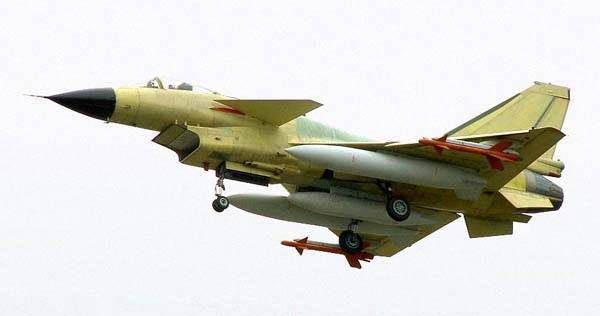
Prototype fighter J-10
Official photographs of the J-10 were released in 2007. Before that, photos taken by Chinese spotters appeared on the Internet, after which some of them went to jail. It was on the basis of these illegal photographs that it became clear that the J-10 was made according to the "duck" aerodynamic scheme with a triangular mid-wing, swept, close to the wing of the PGO and single-keel vertical tail. The air intake is located under the fuselage.
Later, information was published in the Chinese media that there was a large proportion of composite materials in the design of the airframe, made on the basis of aluminum alloys. The serial J-10A fighter is made statically unstable, which should provide a high level of maneuverability. This required the use of a fourfold redundant electric remote control system and modern computer technology.
The J-10A fighter with a maximum takeoff weight of 19 kg, with the Russian turbofan AL-277FN, has a combat radius of up to 31 km. The maximum flight speed at high altitude is 800 km/h. Cruising - 2 km / h. It is reported that without afterburner, the aircraft can fly at a speed of 340 km/h. Ceiling - 970 m. Thrust-to-weight ratio with a curb weight of 1 kg - 110.
According to information published in Chinese sources, the J-10A fighter is equipped with Type 1473 radar of its own design. This station is capable of detecting the MiG-21 aircraft at a distance of up to 100 km. The developer claims that the Type 1473 radar, with a digital weapon control system, can simultaneously track up to 10 air targets and fire medium-range missiles at two of them.
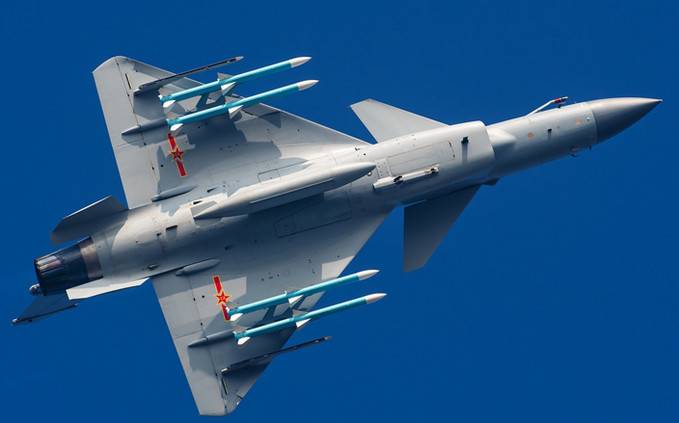
The serial J-10A is armed with an integrated 23 mm Type 23 cannon (a Chinese copy of the GSh-23). To combat an air enemy, melee missiles with an IR seeker PL-8 or Russian R-73 can be used. For missile duels or interception of enemy bombers at medium range, missiles with a semi-active radar seeker PL-11 are designed. The fighter has 11 external hardpoints that can accommodate a payload of 7 kg.
It is reported that in order to increase combat capabilities, modern highly maneuverable PL-10 melee missiles, which allegedly outperform the R-73 missiles, have been introduced into the armament. The PL-12 missiles with an active radar seeker should increase their firing capabilities at a greater range.
Overall, the J-10A was a solid mid-range fighter in the 4th generation light fighter class.
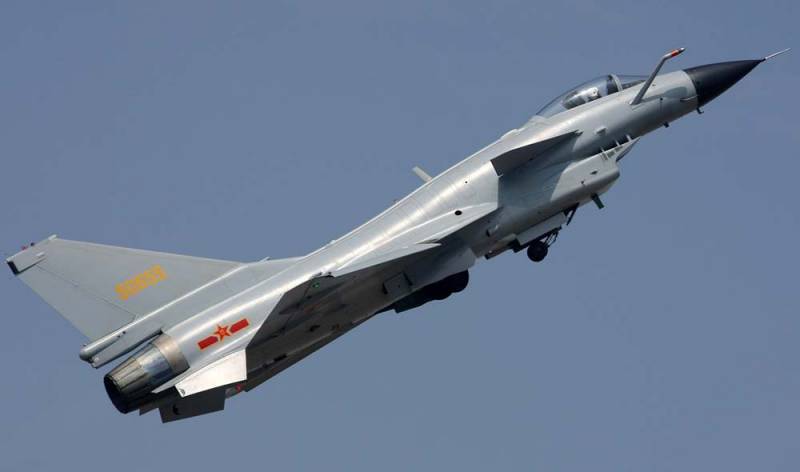
In 2013, it was officially announced that the serial production of the improved J-10B fighter was launched. The main difference between the J-10B fighter and the J-10A is the use of a new radar with AFAR as part of the avionics, which made it possible to reduce the mass of the radar and make the aircraft lighter. The J-10B also received a highly efficient optoelectronic station for detecting targets by their thermal radiation.
In June 2017, photos of the J-10C fighter with the PL-10 melee missile and the latest long-range PL-15 were published. Taking into account the fact that the launch range of PL-15 missiles can reach 150 km, the J-10C fighter must have a radar with very high energy performance. According to the information announced at the aerospace show in Zhuhai, the new LKF601E air-cooled AFAR radar is capable of tracking up to 15 fighter-type targets at a range of 170 km. The station operates at a frequency of 3 GHz. Power - 4 kW. Weight - about 145 kg.
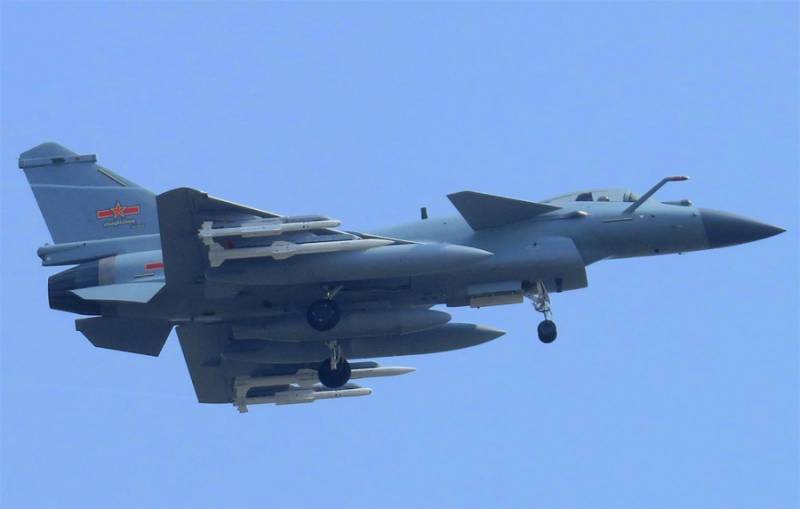
J-10С fighter
A number of authoritative sources claim that the design of the J-10С airframe incorporates technical solutions aimed at reducing radar visibility, and that Russian AL-31FN aircraft engines have been replaced by Chinese WS-10s.
Western aviation experts believe that the successful creation of its own J-10 aircraft was the reason that China refused to purchase MiG-29 light fighters from Russia.
At present, the J-10 has seriously pushed out the obsolete J-7 light fighters and J-8 interceptors in the PLA Air Force. In total, Chengdu Aircraft Industry Corporation has built more than 400 J-10 aircraft of all modifications.
Продолжение следует ...
Information